Key Takeaways:
- Dog wheelchairs can restrict natural movement and may cause discomfort or injury if not properly fitted.
- They can be expensive and may require significant adjustments and maintenance over time.
- Wheelchairs may not be suitable for all dogs, especially those with certain health conditions or behavioral issues.
When our furry friends face mobility challenges, pet parents often turn to dog wheelchairs as a solution to improve their quality of life. While these devices can be life-changing for many pets, it's important to understand that they are not without their drawbacks. This article will delve into the disadvantages of dog wheelchairs, providing pet owners with a comprehensive understanding of the potential issues they may encounter.
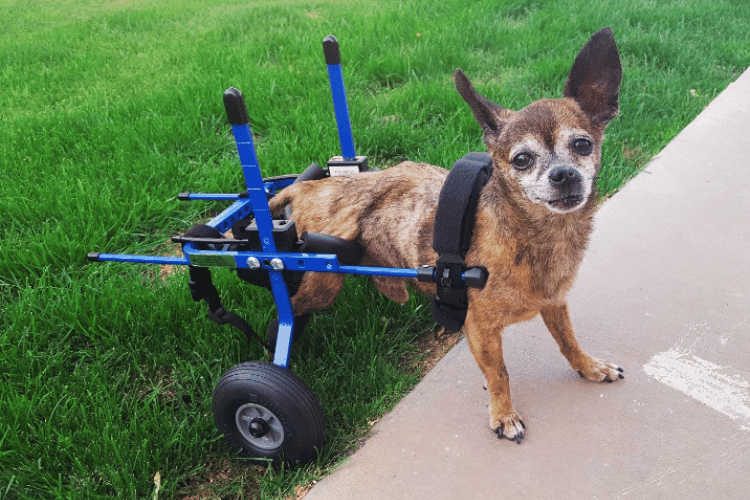
Understanding Dog Wheelchairs
Dog wheelchairs are designed to assist pets with mobility issues, such as hind leg weakness, hip dysplasia, or paralysis. These mobility wheels support the dog's rear legs or front legs, depending on the condition, allowing them to move around more freely. However, it's crucial to consult with a dog mobility assistance specialist to ensure you're choosing the right dog wheelchair for your pet's specific needs.
The Fit and Comfort Factor
A poorly fitted wheelchair can lead to discomfort and even injury for your dog. It's essential that the wheelchair dogs use is fully adjustable to their size and shape. If the rear leg rings or support bar of a rear support canine wheelchair don't align correctly with the dog's hips and abdomen, it can cause chafing or pressure sores. Similarly, a front harness that's too tight or loose can affect a dog's breathing or cause them to stumble.
The Cost of Mobility Support
Dog wheelchairs can be a significant investment. High-quality, fully adjustable wheelchairs, such as the Walkin' Wheels wheelchair, come with a price tag that may not be feasible for all pet owners. Additionally, as a dog's changing health necessitates adjustments, there may be ongoing costs for maintenance and replacement parts.
The Challenge of Adaptation
Not all dogs adapt well to using a wheelchair. For some, the sensation of being supported by a device can be unsettling. It may take time and patience for a dog in a wheelchair to become comfortable with the apparatus. During this period, the dog may resist using the device, leading to frustration for both the pet and the pet parent.
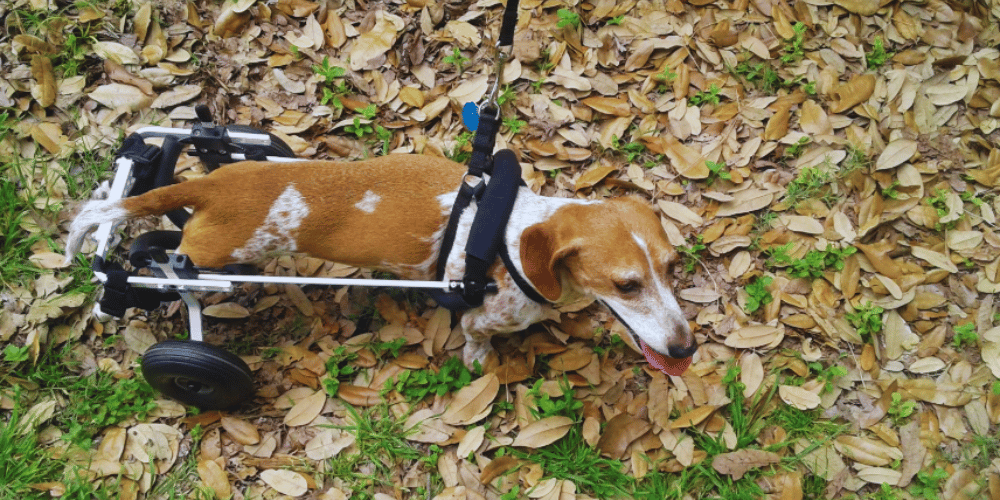
Mobility vs. Natural Movement
While a rear wheelchair or a full body support wheelchair can provide mobility support, they can also restrict a dog's natural movements. Dogs are instinctual creatures that rely on body language and movement to communicate. A wheelchair can impede their ability to interact with other dogs or engage in typical dog behaviors, which can affect their social life and emotional well-being.
Health and Medical Considerations
Wheelchair dogs with certain health conditions may find that a wheelchair exacerbates their issues. For instance, dogs with intervertebral disc disease may experience increased pressure on their spine when using a wheelchair. Similarly, dogs with degenerative myelopathy may not benefit from a wheelchair as the disease progresses.
The Impact on Pet Parents
The responsibility of managing a disabled pet in a wheelchair can be significant. Pet parents must dedicate time to help their dog get in and out of the device, ensure it's functioning correctly, and monitor their pet for any signs of discomfort or injury. This can be a considerable commitment, especially for owners of multiple dogs or those with limited time and resources.
Accessibility and Storage Concerns
When considering a dog's wheelchair, pet owners must also think about the practical aspects of storing and transporting the mobility aid. Wheelchairs for dogs, especially those designed for larger breeds, can be bulky and may not fold flat, making them challenging to store when not in use. For families with limited space, this can pose a significant inconvenience. Additionally, transporting the wheelchair to different locations, such as a park or a vet clinic, requires a vehicle with enough space to accommodate the equipment. This can limit the spontaneity of trips with your furry friend and may require additional planning.
On the other hand, some modern pet wheelchairs are designed with portability in mind. Models with air-filled tires provide a smoother ride and can often be deflated for easier storage. Wheelchairs that feature a modular design allow for parts to be detached and reassembled quickly, making them more convenient for on-the-go scenarios. However, it's essential to consider whether these features are available for the specific model that fits your dog's size and needs, as not all wheelchairs offer such flexibility.
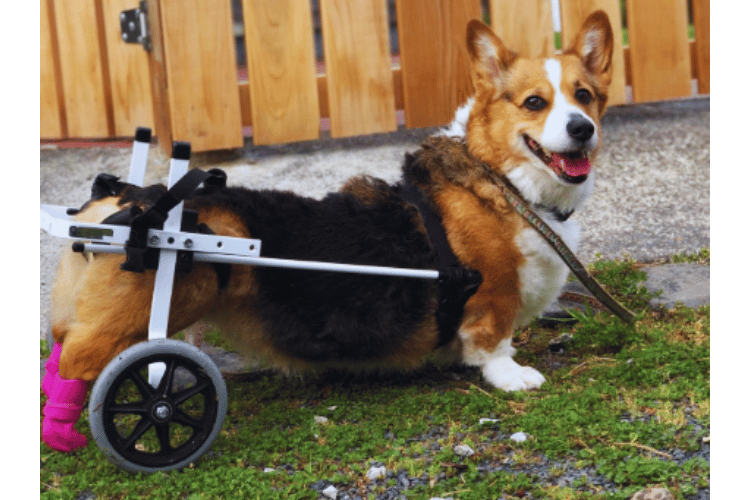
The Versatility of Dog Wheelchairs for Different Breeds
When considering a dog's wheelchair, it's essential to recognize that not all breeds are built the same. Most dogs have unique body types, which means a customized mobility cart is often the best route to ensure proper support and comfort. For instance, a Dachshund's elongated body requires a different type of support compared to a stocky Bulldog. Dog's size and weight distribution play a crucial role in the design of a wheelchair. A dog's rear legs might need more support if they are longer, while a dog with a heavier front may need additional support for their front and back legs.
Moreover, the breed can also influence the progression of certain health conditions. Larger breeds might be more prone to hip dysplasia, necessitating a wheelchair that offers adequate support to the dog's hips. On the other hand, smaller breeds might suffer from conditions like intervertebral disc disease, which can affect their hind legs and overall dog's mobility. A walkin wheels wheelchair can be adjusted to cater to these specific needs, ensuring that the dog's quality of life is maintained, and they can continue to enjoy long walks at their own pace. Sure, here are two new sections for the article:
Maintenance and Upkeep of Dog Wheelchairs
Maintaining a dog's wheelchair is crucial to ensure its longevity and the comfort of your furry friend. Regular checks and cleaning are necessary to keep the wheelchair in top condition. For instance, air-filled tires provide a smoother ride but require frequent inspection for punctures and proper inflation. It's important to keep the wheelchair clean, especially if your dog frequents muddy or sandy terrains, to prevent any debris from causing discomfort or hindering the wheelchair's functionality.
Moreover, as a dog's health evolves, so does its need for support. A dog's changing health may necessitate adjustments to the wheelchair. This could involve tweaking the support provided to the dog's rear legs or dog's hips to accommodate any new weaknesses or improvements in strength. Keeping up with these changes not only prolongs the usability of the wheelchair but also ensures that your pet's quality of life remains high.
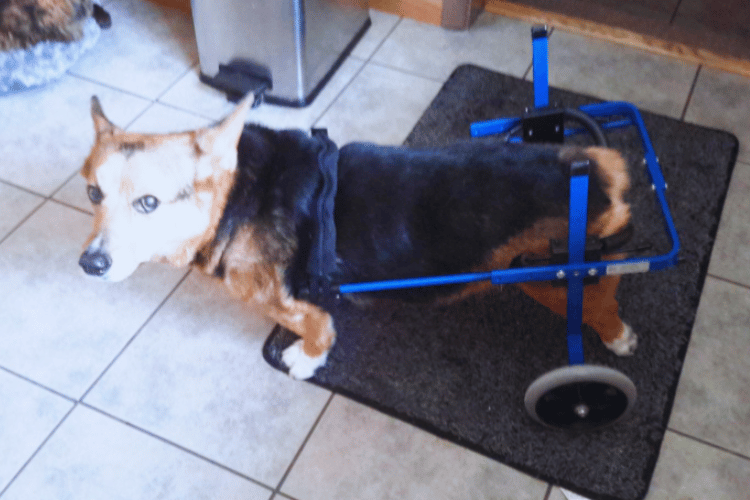
The Importance of Proper Wheelchair Sizing
When it comes to a dog's wheelchair, ensuring the correct fit is paramount for the pet's quality of life. A wheelchair that is too large or too small can cause discomfort and even injury to a dog's hips and abdomen. It's essential to measure your dog's size accurately, considering the length, height, and width, to provide a snug fit that supports the dog's rear legs without restricting movement or causing chafing. A well-fitted wheelchair can make a significant difference in a dog's quality of life, allowing them to move freely and confidently.
Moreover, as a dog's changing health conditions may alter their body shape and size, the adjustability of the wheelchair becomes a critical feature. A dog's life can be greatly enhanced by a wheelchair that can adapt to their evolving needs, ensuring that the support for their rear legs remains optimal over time. This means looking for wheelchairs with adjustable straps, lengths, and heights to accommodate changes in the dog's size and weight, ensuring continued comfort and mobility support.
The Benefits of Air-Filled Tires for Dog Wheelchairs
Air-filled tires provide a smoother ride for dogs using wheelchairs, especially when navigating over rough or uneven terrain. The cushioning effect of the air helps to absorb shocks and bumps, reducing the impact on the dog's hips and spine. This can be particularly beneficial for dogs with arthritis or other joint issues, as it minimizes additional stress on their joints. Additionally, the traction offered by air-filled tires can give dogs a better grip on slippery surfaces, enhancing their mobility and safety.
The choice of tires for a dog's wheelchair can also affect the pet's quality of life by influencing the types of activities they can participate in. With air-filled tires, dogs can enjoy outdoor adventures on various terrains, from grassy parks to gravel paths, without the discomfort that hard wheels might cause. This not only improves the dog's physical health by encouraging exercise but also boosts their mental well-being by allowing them to explore and engage with their environment, maintaining an active and fulfilling dog's life.
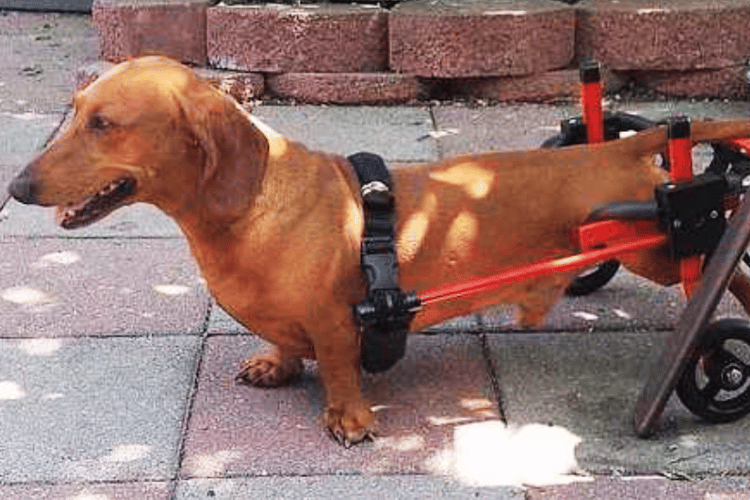
Compatibility with Other Support Devices
When considering a dog's mobility aid, it's essential to explore how a wheelchair might work in conjunction with other support devices. For dogs with extensive mobility issues, combining a wheelchair with harnesses or slings can offer additional support to the dog's abdomen and prevent strain. This combination can be particularly beneficial when a dog stumbles or requires help with balance and stability during rehabilitation or due to progressive health conditions.
Customization plays a significant role in achieving the perfect synergy between different aids. Customized mobility carts can be designed to accommodate additional support devices, ensuring that the dog's size and specific needs are met. This holistic approach to dog support can significantly enhance a dog's quality of life, allowing for a more comprehensive mobility solution that adapts to the pet's size and health requirements. By considering the compatibility of various support devices, pet parents can provide a tailored solution that maximizes their dog's independence and comfort.
The Evolution of Dog Wheelchairs with Technological Advancements
The technology behind doggie wheelchairs has evolved significantly, offering advanced features that enhance a pet's quality of life. One such innovation includes air-filled tires that provide a smoother ride for the dog, especially when navigating over rough surfaces. These tires act as shock absorbers, reducing the impact on the dog's abdomen and spine. This is particularly beneficial for disabled dogs with rear limb weakness or those whose legs splay outward, as it minimizes additional strain on their bodies.
Another technological advancement is the integration of adjustable harnesses and supports. A chest harness, for example, can be fine-tuned to fit snugly around the dog's body, ensuring that the dog's weight is evenly distributed across the wheelchair. This prevents any undue pressure on a single point, which could lead to discomfort or even injury. Additionally, the adjustability factor means that as a dog's changing health conditions evolve, the wheelchair can adapt accordingly. This adaptability ensures that the dog cart remains a viable support mechanism throughout the dog's life, accommodating changes in the pet's size or mobility needs.
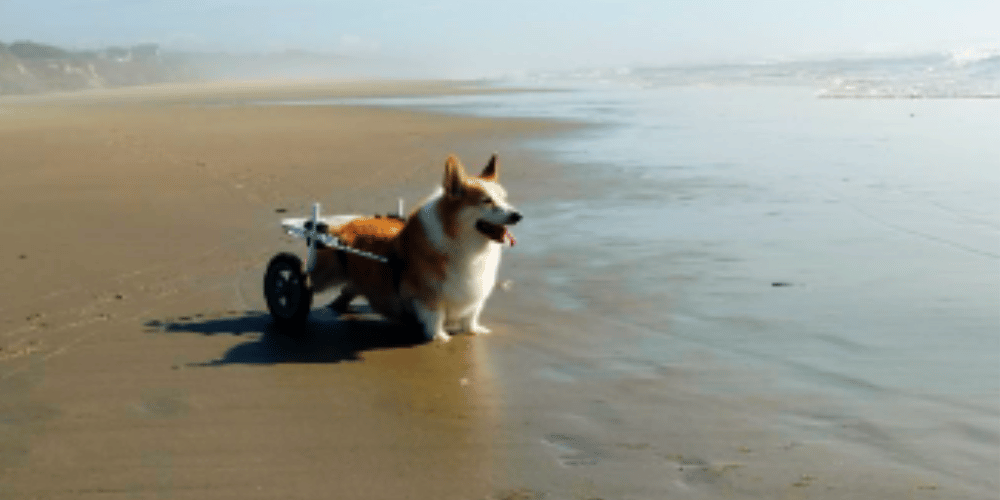
Social and Environmental Adaptation
Another aspect to consider is how a dog's wheelchair affects their social interactions and ability to engage with their environment. Dogs are inherently social animals, and their interaction with other dogs and people is crucial for their mental well-being. A wheelchair may alter how other dogs perceive and approach a disabled dog, which can impact social dynamics at the dog park or during walks. Owners need to be mindful of these changes and may need to facilitate introductions and interactions to ensure their pet continues to enjoy a social life.
Furthermore, while rear limb wheelchairs enable paralyzed dogs to move around, they may not be suitable for all environments. For instance, dog carts might struggle on uneven terrain, sandy beaches, or muddy areas where the wheels can get stuck. This limitation can restrict the places where a dog and its owner can comfortably explore together. To mitigate this, some wheelchairs come equipped with all-terrain wheels, but it's crucial to assess whether these options are compatible with your pet's size and the typical environments you both frequent. It's all about finding the right balance to maintain your pet's quality of life while accommodating their new mobility needs.
Wheelchairs and Rough Terrain
Wheelchairs are not always suitable for all environments. Dogs that live in areas with rough terrain may find it challenging to maneuver in a wheelchair. While some models come with air-filled tires to provide a smoother ride, navigating uneven ground can still be difficult and may limit where a dog can go.
The Towel Test and Other Considerations
Before investing in a dog's wheelchair, many veterinarians recommend the towel test to assess a dog's strength and willingness to move. If a dog shows little interest in moving even with support, a wheelchair may not be the best option. Additionally, for small dogs or those with very delicate frames, the added weight of a wheelchair can be burdensome.
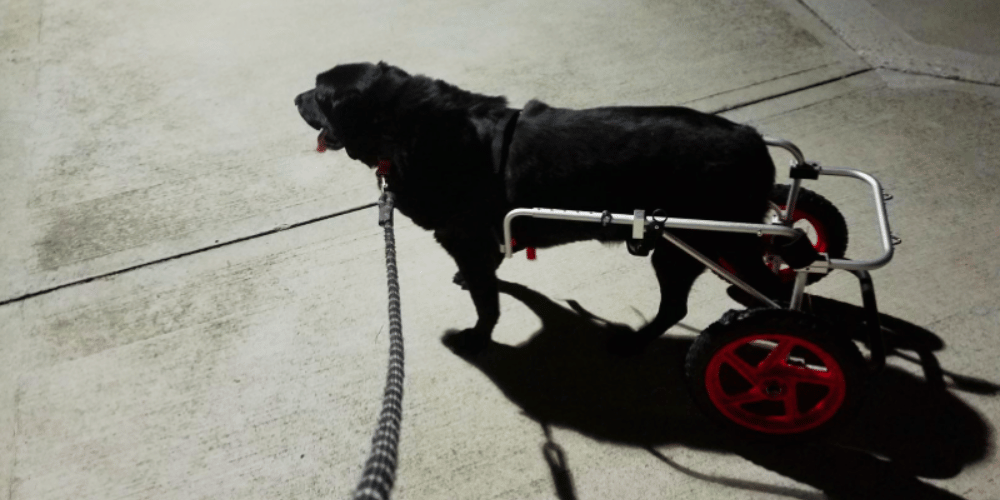
Sizing and Adjustability Issues
Finding the right dog wheelchair is crucial, and it's not just about the dog's size. The pet's quality of life can be impacted if the wheelchair is not the right fit. A customized mobility cart may be necessary for some dogs, which can increase the cost and complexity of providing mobility support.
Behavioral and Training Challenges
Even dogs that are good candidates for mobility options may face behavioral challenges when adapting to a wheelchair. Training a dog to use a wheelchair requires consistency and positive reinforcement. Some dogs may never fully adjust, which can limit the effectiveness of the device.
The Emotional Support Aspect
For handicapped dogs, a wheelchair can offer more than just physical support; it can provide emotional support by allowing them to engage in activities they enjoy. However, if a dog continues to struggle with using a wheelchair, it can lead to frustration and a decrease in their overall happiness.
Long-Term Dependence
Relying on a wheelchair for mobility can lead to long-term dependence. As a dog's muscles weaken from lack of use, it may become more challenging for them to move without the aid of the wheelchair, potentially reducing their overall strength and health.
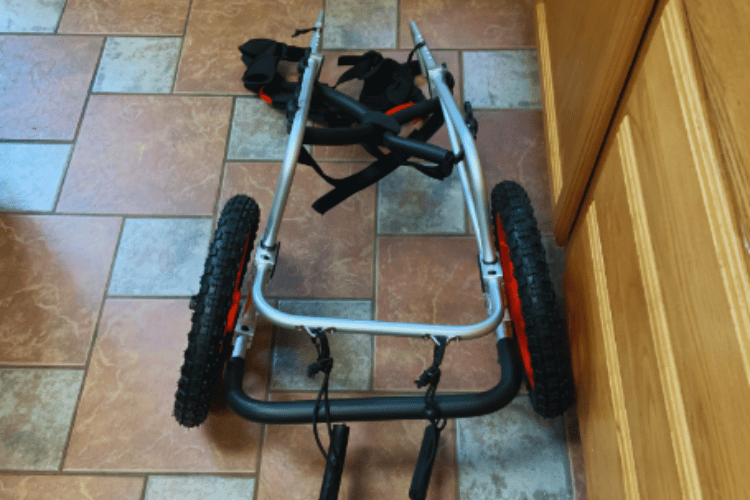
The Right Wheelchair for the Right Dog
Choosing the right dog wheelchair is critical. A forelimb wheelchair for a dog with front leg issues or a rear limb wheelchair for hind leg weakness must be selected with care to ensure optimal support. The wrong type of wheelchair can do more harm than good.
The Impact on Quality of Life
While the goal of a dog's wheelchair is to improve the pet's quality of life, it's important to consider the potential negative impacts. If a wheelchair causes discomfort, limits a dog's activities, or becomes a source of stress, it may not be the right choice for improving a dog's life.
Summary
Dog wheelchairs can offer invaluable support to pets with mobility issues, but they are not without their disadvantages. From the challenges of finding the right fit to the potential for increased medical complications and the emotional impact on both the dog and the pet owner, it's essential to weigh the pros and cons carefully. Consulting with a dog mobility assistance specialist and considering all aspects of your dog's health and happiness are crucial steps in determining whether a wheelchair is the best option for your furry friend.
FAQ Section
Q: Can all dogs with mobility issues use wheelchairs? A: Not all dogs are suitable candidates for wheelchairs. Factors such as the dog's specific health condition, size, and temperament must be considered. It's important to consult with a veterinarian or a dog mobility assistance specialist to determine if a wheelchair is appropriate for your pet.
Q: How do I know if the wheelchair is the right fit for my dog? A: Proper fitting is crucial for a dog's comfort and safety. Look for signs of discomfort, such as chafing or reluctance to move. A fully adjustable wheelchair should be able to accommodate your dog's size and shape, and regular adjustments may be necessary as your dog's health changes.
Q: Are there alternatives to wheelchairs for dogs with mobility issues? A: Yes, there are alternatives to wheelchairs, such as harnesses and slings, which can provide support for dogs with mobility issues. Physical therapy, hydrotherapy, and other treatments may also be beneficial. It's best to discuss all available options with your veterinarian or a dog mobility assistance specialist.
Thank you for visiting LegitLists we hope this helps you make a legitimate choice!






